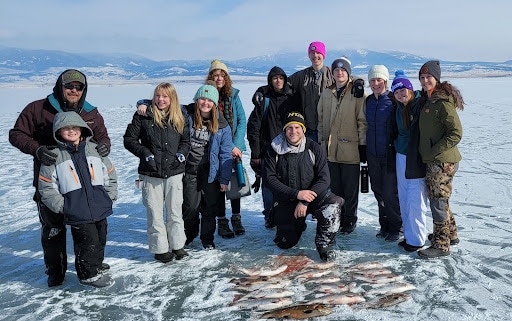Contact: Frank Szollosi, Executive Director, Montana Wildlife Federation, 406-417-9909
Helena, MT: Today, the Montana Wildlife Federation called on Representative Matt Rosendale to withdraw his co-sponsorship of legislation that would defund the Montana Department of Fish, Wildlife and Parks and gut federal funding for wildlife conservation and hunter education programs across the nation.
H.R. 8167, the “Return our Constitutional Rights Act of 2022,” would explicitly repeal the historic Pittman-Robertson Wildlife Restoration Act, which has been used for generations to fund successful wildlife management and hunting programs. Passed in 1937, the Pittman-Robertson Act sets aside the revenue from federal excise taxes on firearms and archery equipment for grants to state fish and wildlife agencies for wildlife management and hunter education.
“Congressman Rosendale and other co-sponsors of this legislation should be aware that they are demolishing conservation funding for state wildlife management agencies,” said Frank Szollosi, Executive Director of Montana Wildlife Federation. “H.R. 8167 is a direct attack on the legacy of conservation that was created by Pittman-Robertson, and a slap in the face of Montana hunters who understand the importance of using the federal excise tax on firearms to fund Montana’s Department of Fish, Wildlife & Parks (FWP).”
FWP’s largest source of federal funding comes from both the Pittman-Robertson Act and the similar Dingell-Johnson Act, which provides funding to states to support recreational fishing. In total, both sources of funding account for nearly 20 percent of FWP’s budget.
While H.R. 8167 purports to direct federal oil and gas revenue into the Pittman-Robertson Wildlife Restoration Trust Fund instead of firearms excise taxes, the bill is actually written to completely repeal the core Trust Fund and direct additional funding into a different set of programs that are targeted at nongame wildlife conservation. While that latter goal is crucially important – and the subject of separate pending federal legislation, the Recovering America’s Wildlife Act, which enjoys bipartisan support – H.R. 8167 would end all federal funding for the management of game species and their habitats, as well as funding for hunter safety education and public shooting ranges. The bill also reduces the excise tax on fishing products, further diminishing state revenues.
“Pittman-Robertson funding was passed on the shoulders of hunters who cared deeply for fish and wildlife and wanted to see the excise taxes that they pay on firearms go back into wildlife management and hunter education programs. Over the last eight decades, the Pittman-Robertson Act has helped restore and manage species across the nation, including our cherished elk, pronghorn, deer, and other game,” Szollosi continued.
“In co-sponsoring this bill, Rep. Matt Rosendale demonstrates hostility to the conservation legacy built by American hunters. We ask that he stand up for Montana hunters and immediately withdraw his support for H.R. 8167.”





